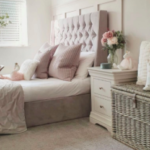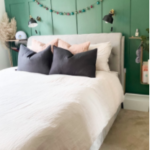
To Renovate or to Buy New?
It’s a question that we hear a lot at the moment; to buy a new build or to renovate? With house prices rising faster than they have in a decade, it’s a decision a lot of new buyers are looking to make quickly. To help get some perspective, we chatted to Carmen and Alicia, who are renovating and buying new respectively, and asked them a few questions about the process.
The first question we asked was how they went about making this difficult decision; what was it that swayed them towards a new-build or a renovation? For Carmen, the dream was originally to ‘self-build’ her own home, but she encountered issues due to a lack of land in her area, so she decided on extensively renovating an existing property. Alicia, on the other hand, likes ‘the convenience of a new build’ for a few reasons; it’s a ‘blank canvas’ that she can make her own, and she was early enough in the process to choose some design elements herself. Practically speaking, it came with an NHBC warranty and she was eligible for the ‘Help to Buy’ scheme as a first-time homeowner.
The biggest question a lot of people have about new builds versus renovation is about the time; does it take longer to put together a whole home from scratch, or to update an existing home? Carmen has found the process to be ‘much slower’ than she had expected, ‘due to requiring specialist services like structural engineers’, who are so busy right now that getting drawings and calculations has taken much longer than it should have. All in all, the project should take about 8 more months. Alicia did have to wait for around 5 months before she could exchange, but she’s all set to move in soon- because she chose a new-build, she didn’t have to manage contractors and engineers in the same way.
Renovations, it has to be said, can allow for more creative freedom; Carmen will be adding a new driveway, moving her front door, enlarging the windows and adding a new, open plan kitchen, as well as switching up the layout of the first floor. This is often much more possible with renovations, especially when the home you’ve bought is fairly old, because you can get the bare bones for much cheaper and have more money and time left for renovation. It’s also important to note that some new- builds are freeholds, meaning that you’ll have to get permission from the landlord before you make any changes.
We also asked both women if they’ve encountered issues they weren’t expecting to encounter. Alicia did have a slight issue with changing mortgage requirements during the pandemic, but other than that hasn’t had ‘many issues at all’. Carmen was not only surprised by how difficult it was to get specialist opinions, she also had a difficult time sourcing some of the building materials she was going to need, due to shortages.
Finally, what did our influencers wish that they had known before they started on this process? Alicia felt that her research had been really helpful, and she wasn’t necessarily surprised by anything in the process. She did wish that she’d known what her monthly outgoings were going to be for this project, but overall she’s not has any huge surprises. Carmen wished that she knew in advance how long it would take to get drawings and surveys done, so that she could have begun the process much sooner.
Both options come with positives and negatives, and the ‘right’ choice for you depends entirely on what you want most out of your new home, where you’re looking to buy and how much time and money you want to pour into the process. If you’re looking for more advice, or a more in-depth look at the process, you can find Carmen at @hometransformed and Alicia at @myfirsthomeisasouter.

































